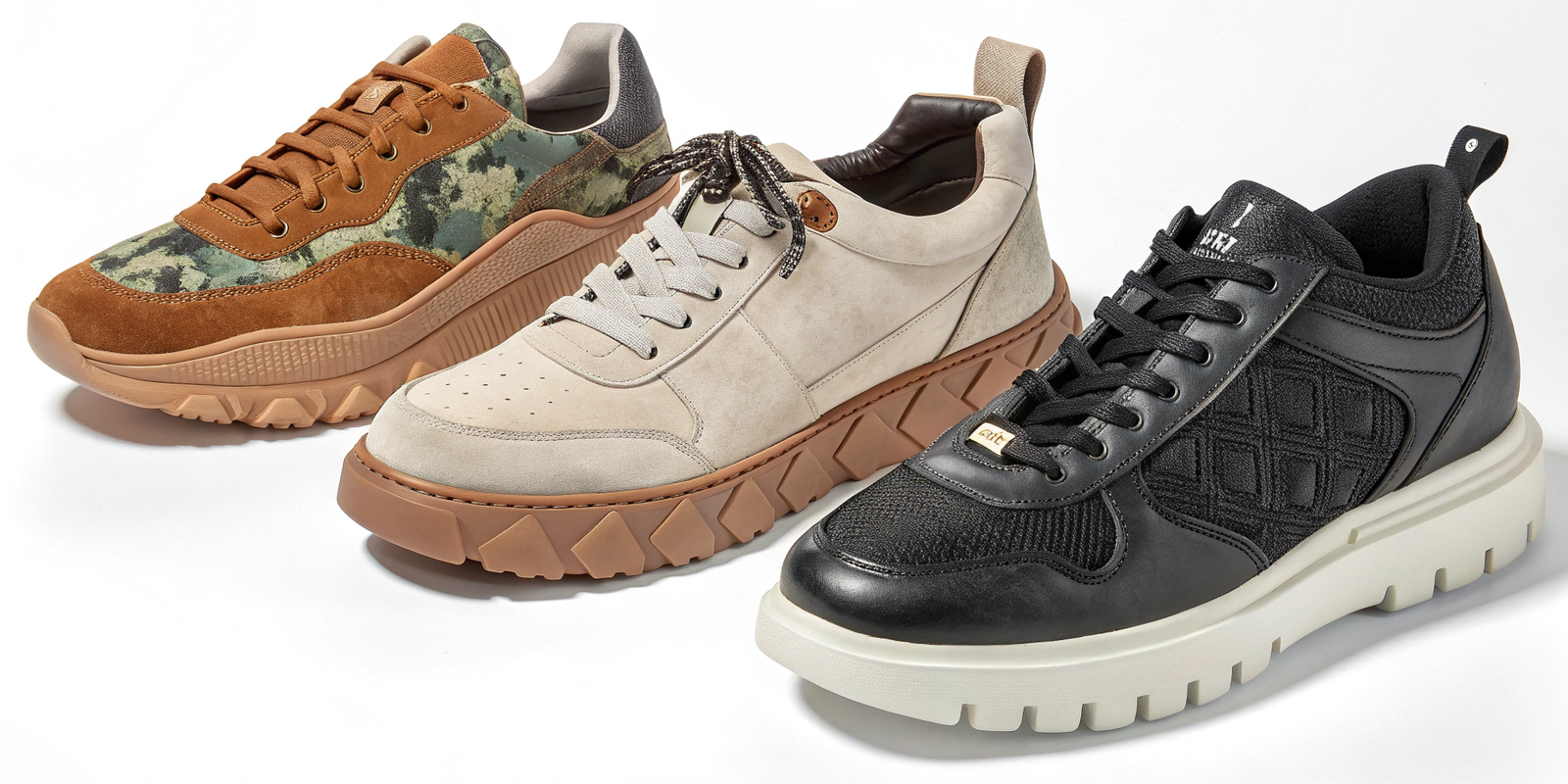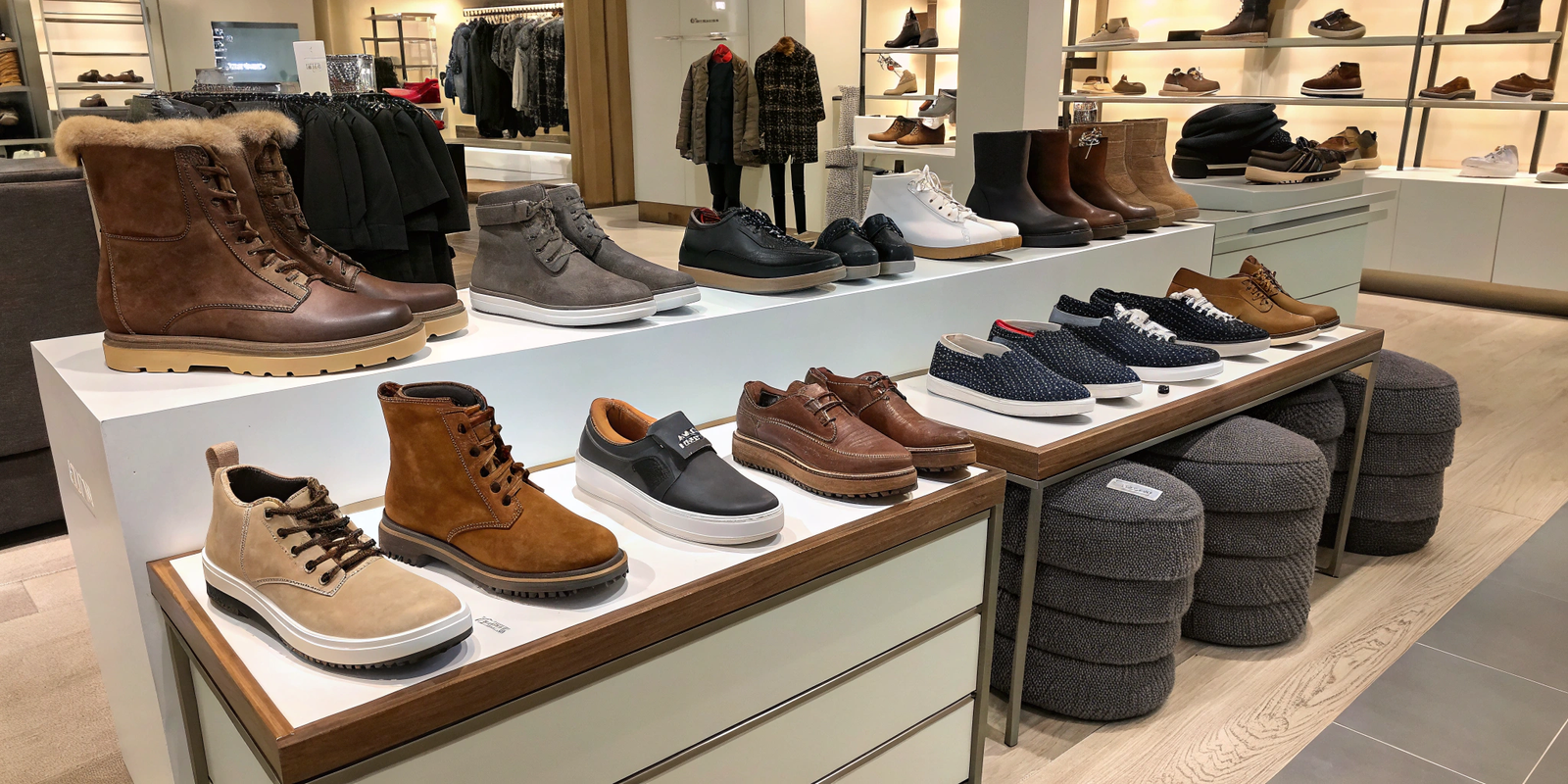Top Shoe Styles Buyers Should Stock in 2025?
Are you wondering which shoe styles will dominate the market next year? Predicting trends is tricky, but crucial for success in the footwear industry.
To predict shoe demand, importers should analyze market reports, consumer behavior, and social media trends, while focusing on key brands setting the pace in innovation and style, especially for seasonal shifts like Fall/Winter 2025.
 After more than 20 years in the shoemaking business, I have learned that staying ahead of trends is not just about luck. It is about careful observation, data analysis, and understanding the rhythm of the market. From our humble beginnings in Shaoxing, I have witnessed countless trends come and go. The key is to distinguish between a fleeting craze and a lasting market shift.
After more than 20 years in the shoemaking business, I have learned that staying ahead of trends is not just about luck. It is about careful observation, data analysis, and understanding the rhythm of the market. From our humble beginnings in Shaoxing, I have witnessed countless trends come and go. The key is to distinguish between a fleeting craze and a lasting market shift.
How can importers predict shoe demand?
Are you struggling to forecast what shoe styles will sell best next year? Predicting demand is a mix of art and science, and it is vital for any importer.
Importers can predict shoe demand by leveraging market research reports, analyzing past sales data, monitoring fashion week trends, tracking influencer marketing, and understanding broader consumer shifts towards sustainability and comfort.
 In my experience at Lucas, predicting demand is not just about guessing. It is a systematic process we have refined over two decades. It involves a lot of listening, looking, and learning. We often tell our partners that reliable data and a keen eye are their best friends. It influences everything from our material sourcing to our production schedules.
In my experience at Lucas, predicting demand is not just about guessing. It is a systematic process we have refined over two decades. It involves a lot of listening, looking, and learning. We often tell our partners that reliable data and a keen eye are their best friends. It influences everything from our material sourcing to our production schedules.
Predicting shoe demand effectively involves a multi-faceted approach, combining statistical analysis with qualitative fashion insights:
- Market Research Reports and Industry Forecasts: This is the starting point for any importer. Rely on professional market research firms that specialize in the footwear industry. These reports provide macro-level data on market growth, consumer demographics, and category-specific predictions (e.g., sneakers vs. heels). They use big data and expert analysis to identify overarching trends. For us, this means subscribing to services that track global footwear consumption and emerging market segments. It gives us a broad overview of where the industry is heading. Understanding these larger currents helps us steer our production in the right direction. For example, if reports show a steady increase in demand for sustainable materials, we prioritize sourcing those for our clients.
- Analyzing Past Sales Data and Inventory Performance: Your own historical data is a goldmine. Look at what sold well in previous seasons, what had high sell-through rates, and what items stayed on the shelves. Identify patterns related to color, material, style, and price point. Compare year-over-year growth for specific categories. This internal data helps you understand your customer base's preferences. It also highlights missed opportunities. At Lucas, we provide our partners with detailed insights on their past orders. This helps them refine their future buying strategy. We examine regional differences in sales as well. What sells well in Europe might not be popular in South Africa, for instance.
- Monitoring Global Fashion Weeks and Influencer Marketing: Fashion weeks in Paris, Milan, New York, and London are powerful trend predictors. Pay close attention to the footwear showcased by top designers. These often filter down to mainstream fashion within a season or two. Simultaneously, track social media influencers, especially those focused on fashion and lifestyle. Their endorsements can quickly ignite demand for specific styles. Look at what they are wearing, what brands they are promoting, and what aesthetics are gaining traction. This is a more dynamic, real-time indicator of emerging trends. My design team always monitors these platforms to catch early signals.
- Understanding Broader Consumer Trends (e.g., Sustainability, Comfort): Beyond specific styles, understand the underlying consumer values. Are consumers prioritizing comfort over everything else? Is there a growing demand for eco-friendly and ethically produced shoes, as we discussed previously? How important is versatility in footwear for their lifestyle? These broader trends often dictate the longevity of a shoe style. For example, the sustained demand for sneakers is linked to a global shift towards casualization and active lifestyles. Our GRS certification and BCI membership at Lucas are direct responses to the growing demand for sustainable practices.
- Competitive Analysis and Retailer Insights: Keep a close eye on what your competitors are stocking and what's performing well for them. Visit retail stores, both online and offline, to see what is prominently displayed and what is selling out. Engage with sales representatives in your target markets. They often have real-time feedback from consumers. What questions are they getting asked? What are customers requesting? This ground-level intelligence is invaluable.
Which brands are leading the 2025 footwear trends? Are you curious about the trendsetters in the footwear world for next year? Certain brands consistently drive innovation and dictate market direction. Leading brands for 2025 footwear trends will likely include industry giants pushing sustainable technologies and smaller, innovative labels focused on niche markets, blending performance, comfort, and bold aesthetics. At Lucas, we always look to the leaders to understand the direction of the market. It is not just about copying. It is about understanding the underlying vision and adapting it to our strengths in manufacturing. These brands invest heavily in research and development, setting the bar for performance, style, and sustainability. They are often the ones introducing new materials or design concepts.
The brands leading the footwear trends in 2025 will likely be a mix of established sportswear giants and innovative newcomers, all pushing boundaries in various aspects:
- Nike/Adidas: These perennial powerhouses will continue to innovate in performance footwear. Expect advancements in cushioning technologies, sustainable materials (e.g., recycled plastics, bio-based materials), and collaborations with high-profile designers to maintain their cultural relevance. Their focus will be on blending athletic performance with lifestyle aesthetics, further cementing the "athleisure" trend while pushing towards greater environmental responsibility. They often set the standards for comfort and technology.
- Hoka One One/On Running: These brands exemplify the shift towards extreme comfort and performance in casual wear. Their maximalist cushioning and unique sole designs will continue to influence mainstream styles. Expect to see their design language—chunky soles, vibrant colors, and technical materials—trickle down into everyday fashion, particularly in the "gorpcore" aesthetic (utility-chic outdoor wear). Their focus on ergonomic design for long-distance comfort will remain a key selling point.
- New Balance: Having made a massive comeback, New Balance will likely continue its strong run with heritage designs updated with modern comfort and material innovations. Their strategy of limited drops and collaborations keeps demand high. Expect more minimalist, versatile styles that blend retro appeal with contemporary wearability, appealing to a broad demographic looking for classic, yet fresh, sneakers.
- Sustainable Innovators (e.g., Allbirds, Veja): These brands will continue to lead in sustainable materials and ethical production. Allbirds will likely push further with bio-based alternatives and circular design principles. Veja will stick to its blend of classic styling with transparent supply chains and responsible sourcing. Their influence will be significant in driving consumer expectations for ethical craftsmanship across the industry. My team at Lucas pays close attention to their material innovations.
- Designer Labels (e.g., Loewe, Bottega Veneta): High fashion designers will continue to dictate luxury footwear trends. Expect avant-garde silhouettes, unexpected material combinations (think textures and embellishments), and a continued emphasis on statement heels and boots. Their influence is often seen in the more daring and experimental elements that eventually filter down to accessible price points.
Which shoes should retailers stock for Fall/Winter 2025?
Are you planning your inventory for the colder months of 2025? Certain styles are perennial winners, but new trends always emerge.
For Fall/Winter 2025, retailers should stock versatile boots (classic and utility), updated loafers, comfortable yet stylish sneakers, and sustainable options across all categories, reflecting a continued demand for practical elegance and eco-consciousness.
 When we advise our clients on their Fall/Winter orders, we always emphasize a balanced approach. It is about covering the classics, embracing current trends, and making sure there is something for every customer segment. The key is to offer variety that also makes sense for the season's practical demands.
When we advise our clients on their Fall/Winter orders, we always emphasize a balanced approach. It is about covering the classics, embracing current trends, and making sure there is something for every customer segment. The key is to offer variety that also makes sense for the season's practical demands.
For Fall/Winter 2025, a smart retailer's stock will balance timeless appeal with modern functionality and evolving consumer preferences:
- Versatile Boots (Ankle, Chelsea, Combat – and some taller shafts): Boots are non-negotiable for Fall/Winter. Expect classic ankle boots and Chelsea boots to remain strong staples, valued for their versatility and ease of wear. Combat boots will continue their run, often with chunkier soles and perhaps some subtle embellishments, appealing to a more edgy aesthetic. Also, anticipate a resurgence of taller shaft boots, including knee-high and over-the-knee styles, possibly with sleeker profiles or interesting textures like croc-effect leather. Materials will vary from polished leather to soft suedes and perhaps some waterproof technical fabrics for utility. We are seeing continued strong demand for durable, weather-resistant options.
- Updated Loafers (Chunky Soles, Elevated Hardware): The loafer trend is not going anywhere. For F/W 2025, look for loafers with more substantial, often lug or chunky soles, offering a contemporary take on the classic. Hardware will be key – think oversized buckles, chains, or subtle metallic accents that elevate the design. These will appeal to those seeking a polished yet comfortable option that bridges casual and business-casual wear. There will be a focus on rich, deep colors like burgundy, forest green, and classic black or brown.
- Comfort-First Sneakers (Retro Runners, Elevated Basics): The dominance of sneakers continues, but with an emphasis on comfort and subtle style. Retro running shoes (like New Balance and classic Adidas/Nike styles) will still be strong sellers. Additionally, elevated basic sneakers in premium materials (leather, suede) and muted color palettes or thoughtful color blocking will be essential. These are for consumers who want comfort without sacrificing smart casual appeal. Think clean lines, quality construction, and highly cushioned soles.
- Textured Flats and Mary Janes: Flats and Mary Jane styles will see a boost, particularly those featuring interesting textures like velvet, tweed, or patent leather. These offer a more graceful alternative to sneakers for everyday wear, providing comfort with a sophisticated edge. Look for subtle embellishments or unique strap designs that blend classic charm with a modern twist. These styles cater to a desire for practical elegance.
- Sustainable and Vegan Options (Across Categories): This is not a specific shoe style but rather a crucial consideration across all categories. Retailers must stock boots, sneakers, and flats made from eco-friendly materials (recycled, bio-based, vegan leather) and produced ethically. Brands with clear sustainability certifications (like Lucas's GRS and BCI memberships) will be highly sought after. Consumers are increasingly making purchasing decisions based on environmental and ethical factors. We ensure our materials meet these rising demands.
By stocking a diverse range that covers these categories, retailers can cater to varied consumer tastes while staying aligned with the leading trends for Fall/Winter 2025.
Predicting shoe demand for 2025 involves a strategic blend of market analysis, trendspotting, and understanding consumer values. Focus on versatile boots, stylish loafers, comfortable sneakers, and emphasize sustainable options across all inventories to meet diverse consumer needs successfully.
